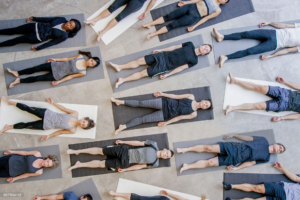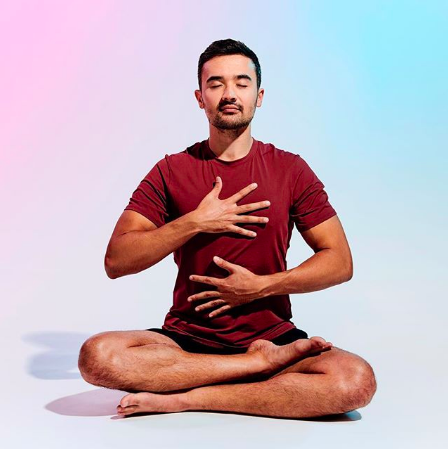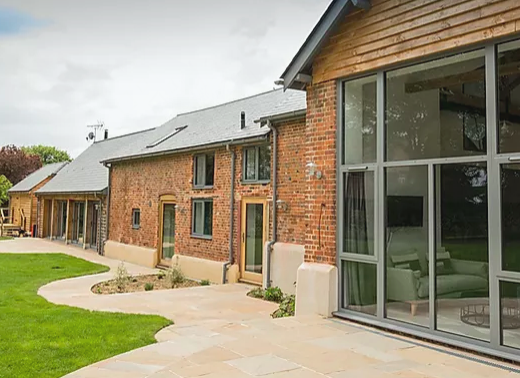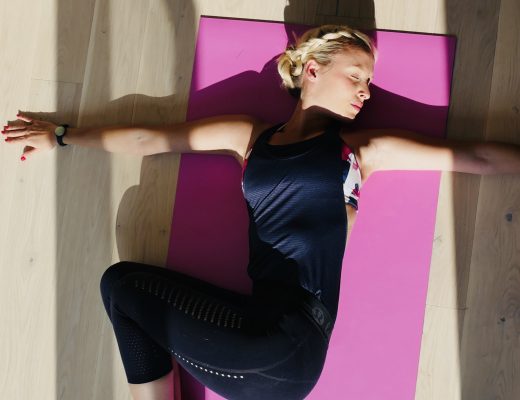Richie Bostock, aka The Breath Guy has been sharing his expertise and passion for conscious breathing or ‘breath-work’ for a number of years now. His work encourages people towards more conscious breathing for both physical and mental benefit.
We’re thrilled to be hosting Richie at Coco Studio later this Summer for a breath-work workshop, but until then, here’s a bit more on the power of the breath and all the associated benefits of paying this incredible life force a little more attention.
Richie! Tell us a little bit about you, how you came to be a breath-work practitioner?
Purely by accident (or fate, whichever you prefer). Some time ago my Dad was diagnosed with Multiple Sclerosis, an autoimmune disease with no real widely accepted cure and a myriad of different and sometimes difficult drug treatments.
Because there was no set treatment plan for MS, I was always on the lookout for different lifestyle changes and alternative treatments could be useful for him. Eventually I came across a podcast by a man called Wim Hof, a Dutch man often referred to as “The Iceman”.

Wim Hoff – The Ice Man
In this podcast, he talked about a method he developed through his own experiences which is fantastic for everyone’s physical and mental health. What caught my attention is that he mentioned the method seemed to be really effective in helping people with autoimmune diseases, including MS. After researching his method more I learned that it had two main elements: cold exposure activities such as cold showers and ice baths and breathing techniques.

To cut a long story short, I travelled to Poland to attend a week long training to learn Wim’s technique and found the effects to be so profound, especially the breathing aspects. On return I taught my dad the technique. Fast forward a few years and my dad breathes and takes cold showers every morning and his MS has not progressed at all! After this I was obsessed with finding out what else people were doing using the breath, which has led me to travel across five continents learning from many modern breathing masters and witnessing the transformative effects of Breathwork.

What is breath-work? And why should we consider taking up the practice of breathing more consciously?
There are many definitions of Breathwork so I will provide my simple definition. Breathwork is the science and art of becoming aware of your breathing and using it for a physical, mental or emotional benefit. This definition encapsulates all the different techniques and modalities where your breath is the primary focus, from simple two-three minute techniques to help you feel relaxed, techniques to relieve chronic back pain or learning to breath to quickly induce meditative flow states.
Even scientific studies are supporting what ancient traditions have known for centuries: linking correct breathing with the mitigation of some of most insidious modern health problems.
So if you understand how to use your breath as the tool that nature has intended for you to use, you become the master of yourself. Reduced stress and anxiety, increased energy levels, improved sleep, improved creativity, induced flow states, increased athletic performance and cardiovascular health – There is so much that you can do with your breath and I believe we still have only just scratched the surface!
What happens to the breath when we get stressed and how might this effect us?
We live in such a fast-paced and ever-changing world which can often feel very challenging and overwhelming. As a result, reported levels of chronic stress and anxiety are higher than they have ever been in recorded history. But what exactly is stress and anxiety and how does it manifest in the body?
If you are feeling anxious, stressed or overwhelmed then you have your Autonomic Nervous System (ANS) to thank. The ANS regulates many of our unconscious bodily functions such as the heart rate, digestion, respiratory rate and hormonal regulation. It is also responsible for what is commonly referred to as the “Fight or Flight” response where our bodies go into a state of action, ready to run away from or fight a perceived threat. This is our stress response and has been very useful for centuries when we have had to fend for our lives against tigers and bears.
But in this modern society where we don’t need to fight off tigers and bears, the new, and perhaps totally unconscious, threats to our survival are what we experience day to day, including our careers, finances, relationships and social perceptions. Even the constant barrage of notifications from our phones and computers can add to this aroused response in your nervous system.
The big problem is that these threats are ever present and if left unchecked will cause you to always operate from this system of action. The body is excellent at developing habits so if you are in action mode all day every day, your physical systems will be very good at staying in this mode, essentially redlining your body at the expense to you physical, mental and emotional health.

When we feel stressed The most common dysfunctional breathing pattern I see is a chest or claviclar breathing pattern. This pattern is obvious when a person inhales and their shoulders travel vertically significantly and their chest puffs out. Here you are using your neck, shoulders and upper chest muscles to expand your chest to breathe in air. These muscles are what are called “Secondary Breathing Muscles” and are designed to be used in short bursts when we need to breathe quickly (e.g. catching our breath after sprinting). They are not designed to be used 24/7 and will fatigue and can cause neck, shoulder and back pain.
On top of that, this style of breathing is neurologically linked to sending the body into a stress response by activating your Sympathetic Nervous System (SNS). A SNS that is chronically overactive will at the very least make you feel more irritable and and stressed and in more severe cases can lead to digestive issues, anxiety disorders, chronic fatigue and Fibromyalgia.

Can you share some top breathing tips for calming things down if we’re feeling a little stressed or under pressure?
You need a way to be able to calm your nervous system down, shifting it from a state of high arousal to a state of rest and relaxation. Luckily, nature has given us a human design feature that can help us do this – our breath! Breathing is the only system in the body that is both automatic and also under our control. This is no accident! Understanding and using the breath purposefully is a major skill if you want to become a healthy, happy, high-performing individual and enhance every aspect of your life.
Try this style of breathing which will help to shift your nervous system from action mode to rest mode.
- To start, put one or both hands over your belly button and when you breathe in, inhale through your nose and feel your hands rise a few centimetres and then fall a few centimetres as you exhale.
- Try this gentle breathing rhythm – 3 second inhale, 6 second exhale, 3 second pause.
- If that is comfortable you can even try and extend each part of the breath (so 4-8-4 or 5-10-5 etc).
- Repeat for a few minutes and feel the difference!
How might someone new to Breathwork start to incorporate a simple daily practice – can you share a short practice with us?
Anyone can do breathing techniques but even before you learn any specific technique, there is one crucial piece of knowledge about breathing that everyone should know and it is something that should really be taught in our schools, HOW WE SHOULD BREATHE DAY TO DAY!
I have a video on Instagram (@thebreathguy) with gives you the four basics elements of proper breathing.
To summarise, they are:
- Breathe low – down into the belly first, feeling your lower ribs and abdomen expand.
- Breathe slow – between 9 – 12 breaths per minute.
- Breathe through the nose – that’s what it’s there for!
- Let go of your exhale – don’t blow out your exhale, just relax and let the air escape naturally.
This is how you should breathe day-to-day at rest. Now if you are exercising or using different techniques then we would of course breathe differently, but this should be your default.
Dedicate a few moments throughout the day to check in on how you are breathing. Are you breathing high into the chest?
Are you holding your breath or barely breathing at all?
Take a minute to reset your breath using these four points and then continue on with your day and check in again later.
Where can we find you – You’re based down in London, but looks like you’re featuring your sessions at some festivals over the summer?
I teach regular classes and 1-1 sessions in London – you can find my schedule at www.thebreathguy.co.uk. I also have regular events in London. I will usually announce these on my instagram @thebreathguy.
I will be teaching at quite a few festivals over the next few months also, including:
Lululemon Sweat Life – UK
Glastonbury Festival – UK
In your element – Monaco
Lost Village – UK
Lamar tree festival – UK
Lovefit Festival – UK
Wanderlust London – UK
Camp Bestival – UK
Wilderness Festival – UK
Boomtown Festival – UK
Breathe – A festival of life – UK
Wellbeing by the Lakes – UK
Rise Festival – France

Finally, You can also try some of my Breathwork classes on an app called Fiit where I also have a six week breath mastery plan to help you fully optimise your breath! -> https://getfiit.tv/richieb
You can meet Richie and experience his Breathwork sessions at Coco Studio in Sept 2019. Dates announced soon!




